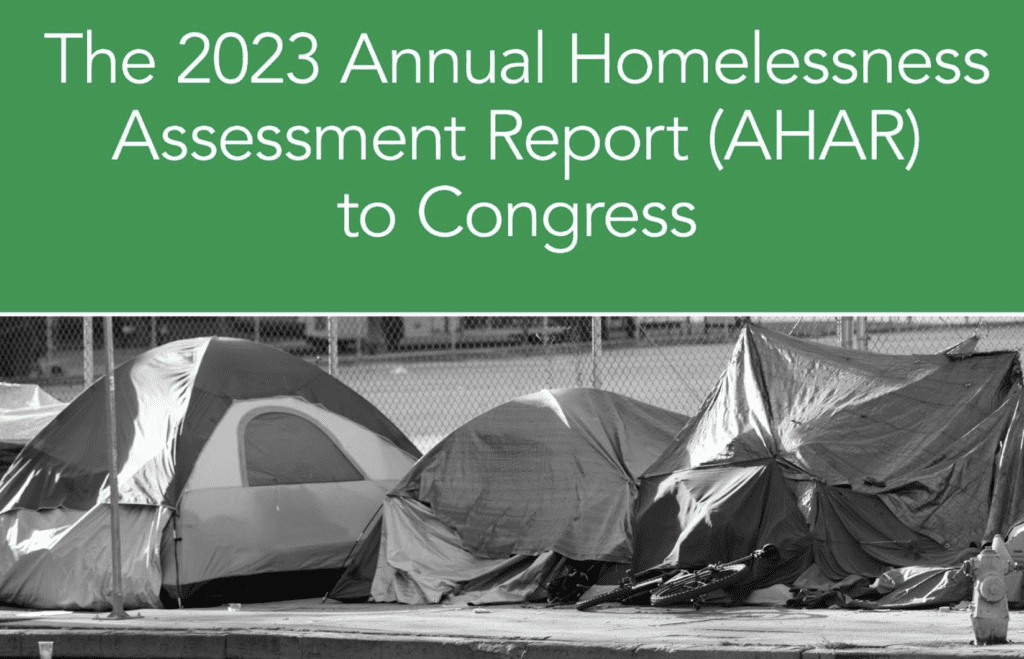Search Posts
Recent Posts
- Vinny Paz to be inducted TODAY into the International Boxing Hall of Fame – CES Boxing June 7, 2025
- In the News… quick recap of the week’s news (6.7.25) June 7, 2025
- Burn with Kearns: Strong without the spend: How scraps became strength tools – Kevin Kearns June 7, 2025
- Rhode Island Weather for June 7, 2025 – Jack Donnelly June 7, 2025
- How to advocate for threatened properties: The Heritage Alliance of Pawtucket June 7, 2025
Categories
Subscribe!
Thanks for subscribing! Please check your email for further instructions.

Homeless in RI: (UPDATED) HUD report uses year old data; Dignity Bus; encampments, CES changes
Dignity Bus program, Woonsocket
(Updated) Set to open on Monday, due to the storm, the Community Care Alliance took people in to the one floor emergency shelter on Social Street, The Serenity Center – and the Dignity Bus is set to open Tuesday, weather permitting.
(Updated) Tuesday additional resources for homeless and housing support will be announced.
After a month filled with details from electrical lines to sewer hookups, staffing, and licensing, The Dignity Bus in Woonsocket is set to open TODAY, according to Rep. Valerie Gonzalez. To make sure it is more than “just a place to sleep in an emergency”, Tony Zorbaugh and his staff from The Source in Florida are traveling up to Woonsocket to help the program get off to the best start, transferring the knowledge they have from their own Dignity Bus program and those they have helped in at least 2 other states. They plan on staying for 2 days. Stay tuned for more on The Dignity Bus’ success in Woonsocket – it certainly has a village gathered round it to help the program start with loving hearts and hands. It is hoped the program will be up and running by Christmas.
Holy Family program, Woonsocket
The Dignity Bus will be parked in the rectory parking lot of Holy Family Church. One of the keys will be the informal use of the building for providing services to those who sleep in the bus. From showers to conference rooms to help people put their resources together. The building is still being renovated, and when completed will offer another 15 beds for those experiencing homelessness.
CES System
Two city encampments are being cleaned up. Woonsocket has worked with HUD on the CES coordinated intake system, and they’ve reached an agreement with HUD where communities will be able to get up to 75 percent of regionalization. That means that the beds the city has, through whatever programs created, will be able to house up to 75 percent of homeless. This is a major accomplishment that other programs throughout the state will benefit from, particularly in outlying areas such as Westerly.
Gonzalez is very appreciative of Secretary of Housing Stefan Pryor for his cooperation in Woonsocket’s new program. Gonzalez said in an interview to The Valley Breeze, “I know who I am. I know what my intentions are. The people I’m working with know who I am. I believe the residents know who I am because I’m out with the people,” she said.
Providence Encampments
Efforts to identify and move along individuals living in encampments in Providence – from behind restaurants, to a field of bamboo, some on public land, most now on private land. The city has said they are prepared to respond to encampers on private land if a complaint is made by the landowner. Providence, according to Mayor Smiley, has spent $4.3 million for shelter beds, transitional housing, and diversion services, and they will be committing another $1.7 million.
Dramatic increases in homelessness says HUD – based on year old PIT study
Homelessness among individuals rose by nearly 11%. Among veterans, by 7.4%. Among families with children, by 15.5%.
The United States is experiencing an overall dramatic 12% increase in homelessness – its highest reported level – as soaring rents and a decline in coronavirus pandemic assistance have combined to put housing out of reach for more Americans, HUD federal officials said.
About 653,000 people were homeless, the most since the country began using the yearly point-in-time survey in 2007. The total in the January 2023 count represents an increase of about 70,650 from a year earlier.
The yearly Point in Time survey data is a year old, another “count” will be made in January of 2024, with a report expected in December of 2024.
Here are the Key Findings of the report:
On a single night in 2023, roughly 653,100 people – or about 20 of every 10,000 people in the United States – were experiencing homelessness. Six in ten people were experiencing sheltered homelessness—that is, in an emergency shelter (ES), transitional housing (TH), or safe haven (SH) program—while the remaining four in ten were experiencing unsheltered homelessness in places not meant for human habitation.
Experiences of homelessness increased nationwide across all household types. Between 2022 and 2023, the number of people experiencing homelessness increased by 12 percent, or roughly 70,650 more people.
The 2023 Point-in-Time (PIT) count is the highest number of people reported as experiencing homelessness on a single night since reporting began in 2007. The overall increase reflects the increases in all homeless populations. Homelessness among persons in families with children experiencing homelessness rose by 16 percent. Similarly, the rise in individuals experiencing homelessness was 11 percent.
People who identify as Black, African American, or African, as well as Indigenous people (including Native Americans and Pacific Islanders), continue to be over-represented among the population experiencing homelessness. People who identify as Black made up just 13 percent of the total U.S. population and 21 percent of the U.S. population living in poverty but comprised 37 percent of all people experiencing homelessness and 50 percent of people experiencing homelessness as members of families with children.
People who identify as Asian or Asian American experienced the greatest percentage increase among all people experiencing homelessness. Between 2022 and 2023, there was a 40 percent increase in the number of people experiencing homelessness who identify as Asian and Asian American (3,313 more people). This increase was greatest among all racial and ethnic groups experiencing unsheltered homelessness, where the number of people identifying as Asian or Asian American increased by 64 percent between 2022 and 2023 (2,774 more people).
The largest numerical increase in people experiencing homelessness was among people who identify as Hispanic or Latino, increasing by 28 percent or 39,106 people between 2022 and 2023.
People who identify as Hispanic or Latino made up 55 percent of the total increase in people experiencing homelessness between 2023 and 2023. Most of this increase (33,772 people) was for people experiencing sheltered homelessness.
Six of every 10 people experiencing homelessness did so in an urban area (59%), with more than half of all people counted in the Continuums of Care (CoCs) that encompass the nation’s 50 largest cities (53%). The remaining four of every ten people who experienced homelessness were located in largely suburban areas (23%) and largely rural areas (18%). These patterns hold across people experiencing both sheltered and unsheltered homelessness. Seven in ten people experiencing homelessness (72%) did so in households without children present.
The number of individuals experiencing sheltered and unsheltered homelessness is the highest it has ever been since data reporting began in 2007. Compared with 2007, 13 percent more individuals were experiencing homelessness in 2023. Increases were highest for unsheltered individuals, which increased by 20 percent (39,598 more people). Experiences of sheltered homelessness also increased, by seven percent or about 15,000 more individuals.
Nearly three of every 10 people experiencing homelessness (28% or roughly 186,100 people) did so as part of a family with children. The number of people in families with children who were experiencing homelessness increased by more than 25,000 people (or 16%) between 2022 and 2023, ending a downward trend in families experiencing homelessness that began in 2012. This overall increase in the number of families with children experiencing homelessness between 2022 and 2023 reflects a 17 percent increase in the number of families with children experiencing sheltered homelessness (24,966 more people).
On a single night in January of 2023, more than 34,700 people under the age of 25 experienced homelessness on their own as “unaccompanied youth.” These unaccompanied youth made up 22 percent of all people under the age of 25 who were experiencing homelessness. Between 2022 and 2023, the number of unaccompanied youth increased by 15 percent (4,613 more youth). The number in 2023 is similar to the number of unaccompanied youth observed in 2020, just before the onset of the pandemic.
More than one in five people experiencing homelessness on a single night in 2023 was age 55 or older. More than 98,000 people experiencing homelessness were aged 55 to 64, and almost 39,700 people were over age 64. Nearly half of adults age 55 or older (46%) were experiencing unsheltered homelessness in places not meant for human habitation.
In 2023, 35,574 veterans were experiencing homelessness—22 of every 10,000 veterans in the United States. The number of veterans experiencing homelessness increased by seven percent (2,445 more veterans) between 2022 and 2023. The increase included a 14 percent rise in the number of unsheltered veterans (1,943 more veterans) and a three percent increase in veterans experiencing sheltered homelessness (502 more veterans). Despite increases in experiences of veteran homelessness between 2022 and 2023, the number of veterans experiencing homelessness are 52 percent lower than it was in 2009, the baseline year for reporting veterans experiencing homelessness in the AHAR.
About one-third (31%) of all individuals experiencing homelessness reported having experienced chronic patterns of homelessness, or 143,105 people. This is the highest number of individuals experiencing chronic patterns of homelessness counted in the PIT count since these data were first reported in 2007. Two-thirds of individuals experiencing chronic patterns of homelessness, or almost 93,000 people, were counted in unsheltered locations. This is also the highest number recorded.
The national inventory of beds for people currently experiencing homelessness increased by seven percent between 2022 and 2023. The largest increase in year-round inventory for people currently experiencing homelessness occurred in emergency shelters (28,760 more beds). Within emergency shelter programs, the largest increase in inventory was for facility-based beds (which are often in congregate settings), which increased by 14 percent between 2022 and 2023. This increase in facility-based beds reflects a reduction in both the non-congregate beds that became available during the COVID-19 public health emergency and the phasing out of social distancing and shelter decompression efforts that were in place during the 2021 and 2022 Housing Inventory Count (HIC) reporting periods.
The national inventory of beds for people formerly experiencing homelessness increased by six percent between 2022 and 2023. Total inventory increased by 35,709 beds across all rapid rehousing, permanent supportive housing, and other permanent housing programs reported in the HIC. The largest increase in year-round inventory for people transitioning out of homelessness was among other permanent housing programs (32,129 more beds).
To read the full report:
HOMELESS IN RI:
Follow past stories of RINewsToday on the homeless issue, here: https://rinewstoday.com/?s=homeless+in+ri
It is 3 days until the first day of winter.

